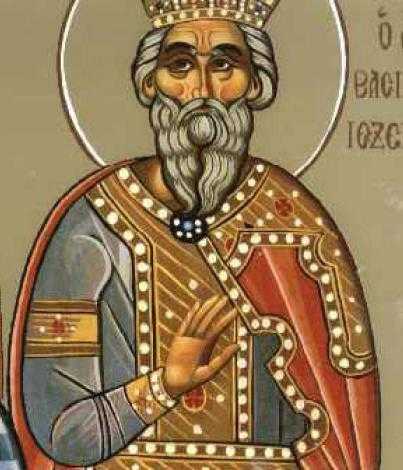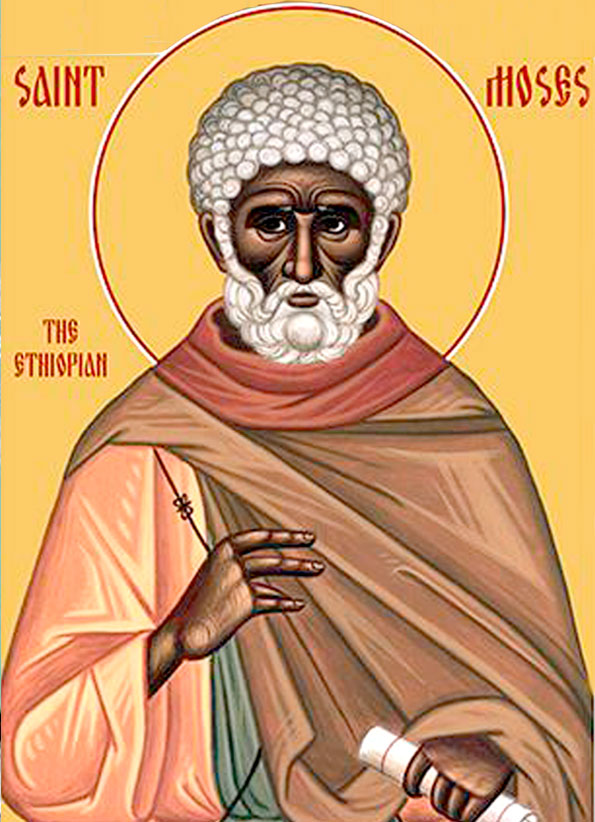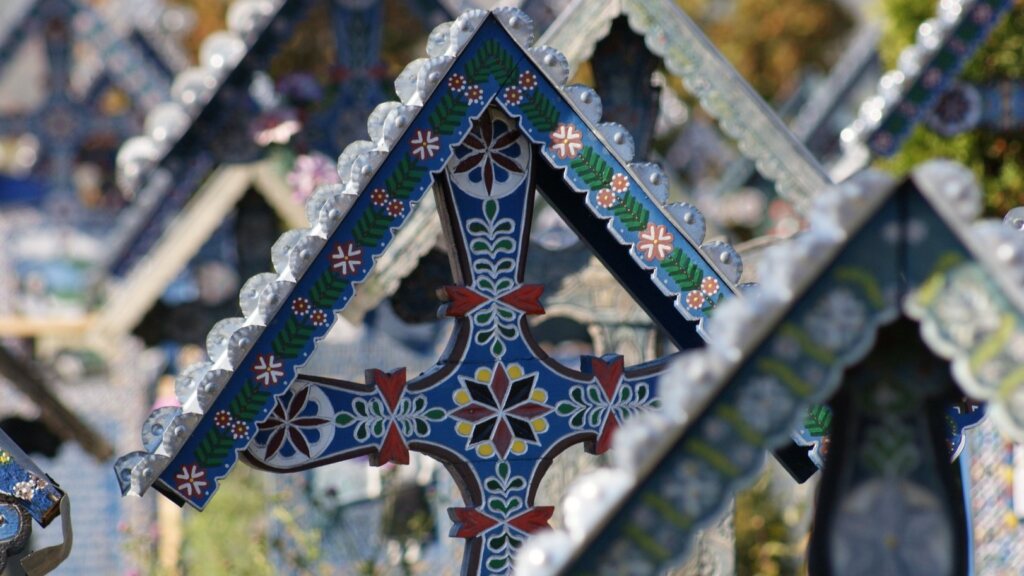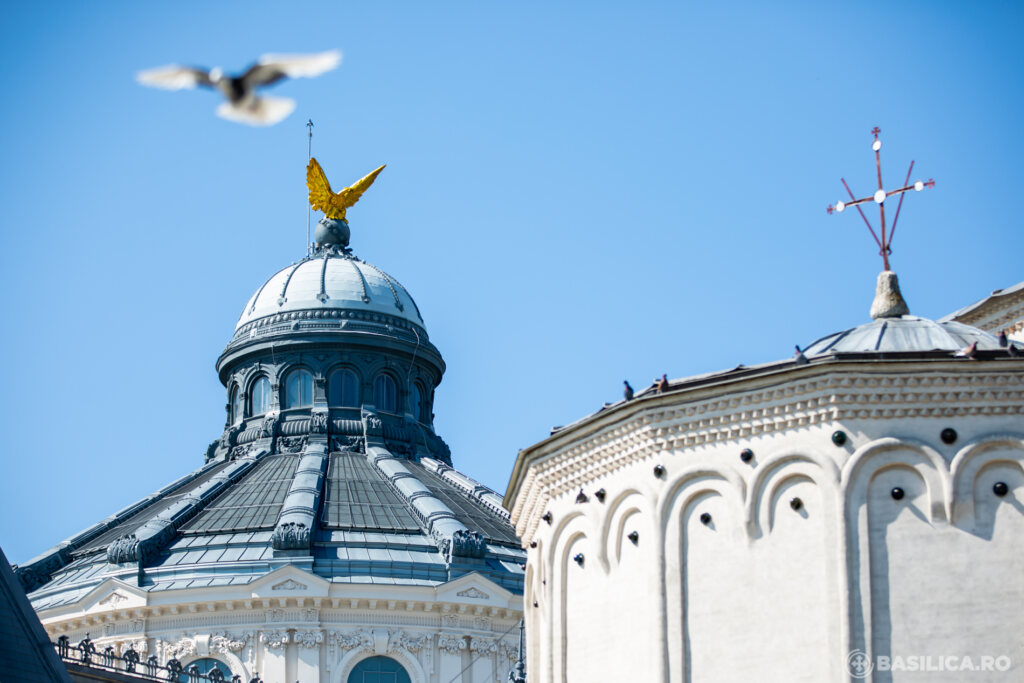Saint Moses
Saint Moses lived in Egypt during the fourth century. He was an Ethiopian, and since he was black of skin he was called “Murin” (meaning “like an Ethiopian”). In his youth he was the slave of an important man, but after he committed a murder, his master banished him, and he joined a band of robbers.
Because of his bad character and great physical strength, they chose him as their leader. Moses and his band of brigands were feared because of their many evil exploits, including murders and robberies. People trembled at the mere mention of his name.
Moses the brigand spent several years leading a sinful life, but through the great mercy of God he repented, left his band of robbers and went to one of the desert monasteries. Here he wept for a long time, begging to be admitted as one of the brethren. The monks were not convinced of the sincerity of his repentance, but the former robber would neither be driven away nor silenced. He continued to implore that they accept him.
Saint Moses was completely obedient to the hegoumen and the brethren, and he poured forth many tears of sorrow for his sinful life. After a certain while Saint Moses withdrew to a solitary cell, where he spent his time in prayer and the strictest fasting.
Once, four of the robbers of his former band descended upon the cell of Saint Moses. He had lost none of his great physical strength, so he tied them all up. Throwing them over his shoulder, he brought them to the monastery, where he asked the Elders what to do with them.
The Elders ordered that they be set free. The robbers, learning that they had chanced upon their former ringleader, and that he had dealt kindly with them, followed his example: they repented and became monks. Later, when the rest of the band of robbers heard about Saint Moses’ repentance, then they also gave up their thievery and became fervent monks.
Saint Moses was not quickly freed from the passions. He went often to the hegoumen, Abba Isidore, seeking advice on how to be delivered from the passions of profligacy. Being experienced in the spiritual struggle, the Elder taught him never to eat too much food, to remain partly hungry while observing the strictest restraint. But the passions did not cease to trouble Saint Moses in his dreams.
Then Abba Isidore taught him the all-night vigil. The monk stood the whole night at prayer, so he would not fall asleep. As a result of his prolonged struggles, Saint Moses fell into despondency, and when he began to have thoughts about leaving his solitary cell, Abba Isidore instead strengthened the resolve of his disciple.
In a vision he showed him many demons in the west, prepared for battle, and in the east a still greater quantity of holy angels, also ready for fighting. Abba Isidore explained to Saint Moses that the power of the angels would prevail over the power of the demons, and in the long struggle with the passions it was necessary for him to become completely cleansed of his former sins.
Saint Moses drove himself to additional labors. Making the rounds of the wilderness cells at night, he carried water from the well to each brother. He did this especially for the Elders, who lived far from the well and who were not easily able to carry their own water. Once, kneeling over the well, Saint Moses felt a powerful blow upon his back and he fell down at the well like one dead, laying there in that position until dawn.
Thus did the devils take revenge upon the monk for his victory over them. In the morning the brethren carried him to his cell, and he lay there crippled for a whole year. After he recovered, the monk with firm resolve confessed to the hegoumen, that he would continue with his ascetic struggles. But the Lord Himself put limits to this toil which lasted for many years: Abba Isidore blessed his disciple and told him that the passions had already left him.
The Elder commanded him to receive the Holy Mysteries, and to go to his own cell in peace. From that time, Saint Moses received from the Lord power over demons.
Accounts about his exploits spread among the monks and even beyond the bounds of the wilderness. The governor of the land wanted to see the saint. When he heard of this, Saint Moses decided to hide from any visitors, and he departed his own cell. Along the way he met servants of the governor, who asked him how to get to the cell of the desert-dweller Moses.
The monk answered them: “Go no farther to see this false and unworthy monk.” The servants returned to the monastery where the governor was waiting, and they told him the words of the Elder they had chanced to meet. The brethren, hearing a description of the Elder’s appearance, told them that they had encountered Saint Moses himself.
After many years of monastic exploits, Saint Moses was ordained deacon. The bishop clothed him in white vestments and said, “Now Abba Moses is entirely white!” The saint replied, “Only outwardly, for God knows that I am still dark within.”
Through humility, the saint believed himself unworthy of the office of deacon. Once, the bishop decided to test him and he bade the clergy to drive him out of the altar, reviling him as an unworthy Ethiopian. In all humility, the monk accepted the abuse. Having put him to the test, the bishop then ordained Saint Moses to the priesthood. Saint Moses labored for fifteen years in this rank, and gathered 75 disciples around himself.
When the saint reached the age of 75, he warned his monks that soon brigands would descend upon the skete and murder all those who remained there.
The saint blessed his monks to leave, in order to avoid violent death. His disciples begged the saint to leave with them, but he replied: “For many years now, I have awaited the time when the words which my Master, the Lord Jesus Christ, should be fulfilled: ‘All who take up the sword, shall perish by the sword’” (Matt. 26: 52).
After this, seven of the brethren remained with Saint Moses, and one of them hid nearby during the attack of the robbers. The robbers killed Saint Moses and the six monks who remained with him. Their death occurred about the year 400.
Troparion, tone 1:
You abandoned the Egypt of the passions, O Father, ascending the mount of the virtues with fervent faith, taking the Cross of Christ upon your shoulders; and being glorified in godly works, you proved to be a model for monastics, O summit of the fathers. Pray unceasingly with them that our souls may find mercy!
Righteous Hezekiah
Righteous Hezekiah (721-691 B.C.) was the son of the impious king Ahaz. The life of Righteous Hezekiah is described in the Bible (4/2 Kings 18-20).
He became King of Judah at the age of twenty-five, and reigned at Jerusalem for 29 years. A zealous worshipper of the True God, Hezekiah reopened the Temple of Solomon (2 Chron. 20:3).
At the time of the celebration of the Passover, to which he summoned all the subjects of the kingdom of Israel, Hezekiah gave orders to destroy the idols throughout his kingdom, reminding the people of the punishments which befell their ancestors for forsaking the True God. After this, idolatry ceased not only in the kingdom of Judah, but also in many places in the kingdom of Israel.
Therefore, God delivered him from his enemies and fulfilled his petitions. Thus, in the fourteenth year of the reign of Hezekiah, the Assyrian king Sennacherib son of Salmanassar, having conquered Israel, gathered his forces to make war upon Hezekiah.
The Assyrian king took the fortress of Lachis and sent an army towards Jerusalem, demanding that the Jewish king surrender. Hezekiah turned to God in prayer, and an angel of the Lord struck down 185,000 soldiers in the Assyrian camp.
Soon after the withdrawal of Sennacherib, Hezekiah fell ill. The Prophet Isaiah came to him through the will of God and told him to set his affairs in order, since he would soon die. But the power of Hezekiah’s prayer was so great that God prolonged his life for another fifteen years.
His prayer was fervent when he besought God to help him. But even more ardent was his prayer of thanks. Hezekiah died at age 54 and was buried with great reverence at Jerusalem. The memory of the Righteous Hezekiah is also celebrated on Cheesefare Saturday.

St. Joseph the Hesychast
Francis Kottis (Saint Joseph’s name before his monastic tonsure) was born in Paros on February 12, 1897, the fourth of seven children to the simple but pious couple George and Maria Kottis. Because of their extreme poverty, Francis left home at the age of seventeen to work in Piraeus as a merchant to support his large family. When he was twenty-three years old he was engaged to a pious girl and lived in exemplary chastity, never touching his fiancee for fear of coming to the point of kissing her.
One day he beheld a wondrous vision of two angels in the form of palace guards, leading him to serve the heavenly king. After this vision, he became pensive and lost all interest in worldly things; he spent his time reading the lives of saints, especially those of the great ascetic Fathers, which ignited in his heart the desire to become a monk. He then called off his engagement, and in preparation for his life on the Holy Mountain, he started conditioning himself to ascetic struggles by fasting and praying in the countryside of Athens.
In 1921, after two years of living ascetically in the world, he finally made his way to the Holy Mountain, his heart longing for a God-bearing spiritual guide to teach him the art of noetic prayer, and he began traversing the crags and caves in search of one. After searching for sometime without success, he decided to join the brotherhood of Saint Daniel of Katounakia. Renowned for his discernment and exalted spiritual life, Saint Daniel chose a moderate ascetical program for his brotherhood.
Francis, however, was inclined to a more austere spiritual life and total dedication to unceasing prayer of the heart, which requires great silence and humility, and thus he stood out from the rest of the brotherhood. Saint Daniel knew he could not stay with his brotherhood, but he also knew that Francis needed a companion, a fellow ascetic, in order to avoid delusion. So he told him that until a co-struggler could be found for him, he should cultivate the Jesus Prayer alone in some remote cave, coming to him occasionally for spiritual guidance.
One day, after suffering many temptations, he was granted a vision of the uncreated light, and he received the gift of ceaseless prayer. From that point on until his death, the prayer was said in his heart unceasingly, granting him exalted spiritual states and divine visions.
Eventually, a suitable co-struggler, Father Arsenios, was sent to him by Saint Daniel. These two spiritual warriors would be inseparable companions for the rest of their lives, leading an austere ascetical life together. In the beginning Father Arsenios regarded Francis as his geronda, even though Father Arsenios had already been tonsured a monk and Francis was still a layman.
However, on the Holy Mountain, to be a geronda, you have to be obedient to a geronda until his death. Therefore, following Saint Daniel’s advice they became disciples of two humble old gerondas in Katounakia named Joseph and Ephraim.
It was not long before one of them, Saint Joseph, reposed in the Lord. Geronda Ephraim, now their sole geronda, was soon convinced by the exceptional lifestyle of young Francis that this spiritual warrior should be officially enrolled in the angelic monastic order. Thus, the day of his monastic tonsure was set for Sunday, August 31, 1925, the commemoration day of the deposition of the precious sash of the Theotokos. His tonsure took place in the cave of Saint Athanasios the Athonite, and he received the name Joseph, after his reposed geronda.
After some years, Geronda Ephraim also fell asleep in the Lord, and the young Father Joseph became a proper geronda. Soon he began attracting monastic aspirants, but few of them were able to endure his severe ascetic program.
Eventually, the nucleus of his brotherhood would consist of five disciples: his co-ascetic Father Arsenios; Father Athanasios, his brother in the flesh; Father Joseph the Cypriot, who would later become the geronda of the Holy Monastery of Vatopaidi; Father Ephraim, later abbot of the Holy Monastery of Philotheou and future geronda of thirty-three monasteries in Greece, the US, and Canada, including Saint Anthony’s Monastery in Arizona; and Father Haralambos, later abbot of the Holy Monastery of Dionysiou. Also, it is noteworthy to mention Saint Ephraim of Katounakia; although he belonged to a different brotherhood, he was guided spiritually by Saint Joseph, and thus is also considered one of his disciples.
In 1938, seeking greater solitude, Saint Joseph and his community moved from Saint Basil’s Skete to a cave at Little Saint Anne’s, but after 15 years of living in the harsh conditions of Little Saint Anne’s, the fathers’ health started to deteriorate, and so in 1953, Saint Joseph decided to move the community farther down the mountain, near the sea, to New Skete, where he would spend the last six years of his life.
A few months before his death, he was visited by the Virgin Mary, whom he held in special reverence, and was promised by her, that she would take him on her feast day. Thus the saint fell asleep in the Lord, on August 15, 1959, the day the Orthodox Church celebrates the Dormition of the Most Holy Mother of God.
“You will fatigue greatly until you realize that prayer without attention and watchfulness is a waste of time, work without pay. Without attention, both the nous [the eye of the soul] and the powers of the soul are diffused in vain and ordinary things, like useless water running down the streets.”
Saint Joseph’s legacy has been carried on by his disciples, who have reestablished the practice of noetic prayer and watchfulness on the Holy Mountain, brought Athonite monasticism to the United States and Canada, and encouraged many Orthodox faithful through the publishing of his life and letters.
Today the spiritual grandchildren of Saint Joseph, who endearingly refer to him as “Pappou Iosif” (Grandfather Joseph in Greek), call upon him to help them in their spiritual life, and he in turn stands before the throne of God and intercedes for his spiritual children and grandchildren, and all those who call upon him.
Source: stanthonysmonastery.org






